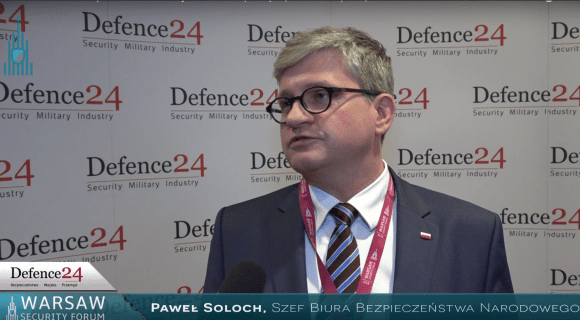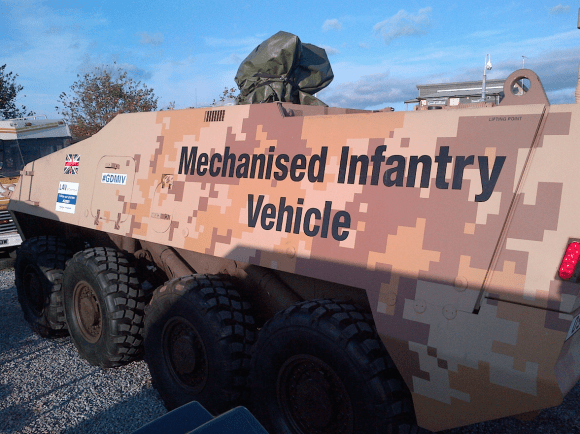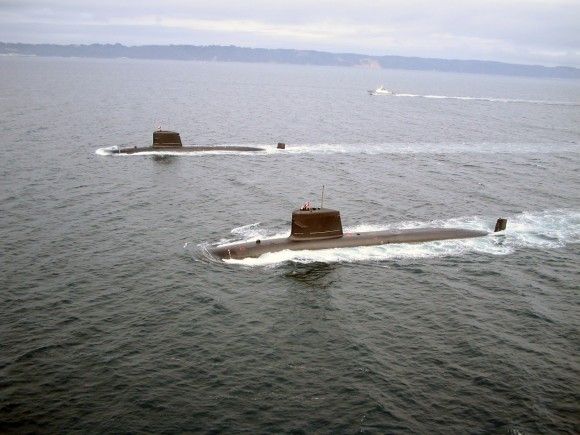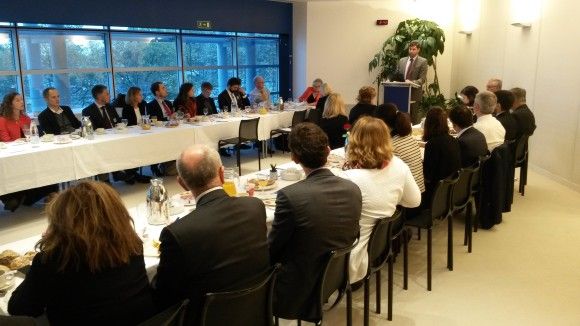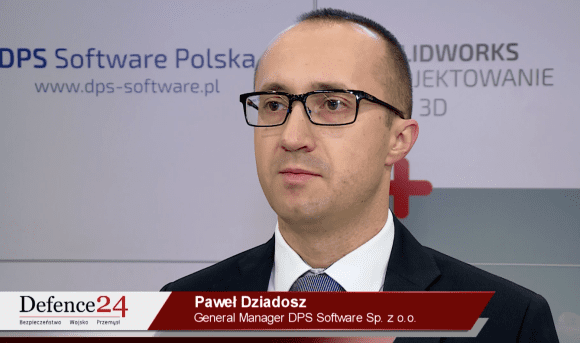Armed Forces
IFF System Was and Should Be Manufactured in Poland
Replacement of the IFF (Identification Friend or Foe) system was one of the most important tasks emerging in front of the Polish Army, following the dissolution of the Warsaw Pact. Thanks to the “Supraśl” programme, not only was that task finalized, but, what is even more important, the whole equipment package has been supplied by the Polish industry. This method of proceeding, when it comes to the IFF solutions, should become a routine.
The IFF system is utilized for the purpose of differentiating own units from the enemy forces and neutral objects. This is why it is an element which is considered to have a decisive value for sovereignty and which is a feature that exhibits the coalition membership. For all of the reasons above, IFF systems of all sorts are treated as solutions of a top secret value, which, if revealed, may have very severe consequences for even the best defence systems.
IFF system devices constitute a fixed and indispensable element of inventory, for any armed forces. No wonder then, that after the Warsaw Pact was dissolved, the IFF system operated by the Polish Army had to be replaced, to make it impossible for the Russian units to pretend and pose for Polish aircraft and ships. Reasons of a nature which was more mundane also emerged. The old, Russian IFF system utilized in Poland (Kremniy-2) was operated at frequencies around 700 MHz, and the army agreed to to stop using this bandwidth, and transfer it for the needs of broadcasting the TV signal.
What is more, replacement of the IFF suites had to be implemented in line with the technical and procedural requirements related to interoperability with the allied forces. For Poland, which was planning to join NATO then, it meant that there was a need to quickly adapt to the NATO standards which were completely new at the time. The process was difficult, as Warsaw had no access to the confidential normative documentation which remained in force within the alliance; here we are making a reference to, above all, the STANAG 4193 standardization agreement which defined the specification of the IFF suites.
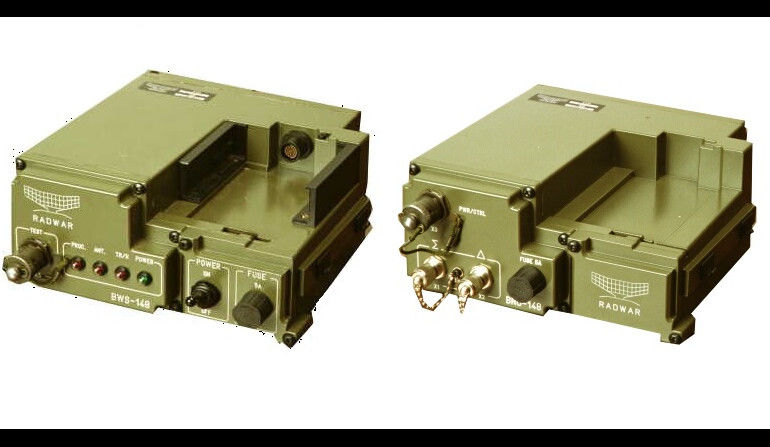
Procurement of the new equipment was not very difficult, as it only required a proper definition of the requirements addressed to the contractor (such thing happened e.g. in case of the F-16 jets). In case of the existing inventory and armament, post-Soviet in their majority, or based on Soviet licences, the task turned out to be far more complicated. Modern electronic systems had to become embedded within the older generation devices which were not compatible, as they were based on older, sometimes tube, technologies and were operated on a principle which was entirely different. And this required parallel involvement in numerous R&D programmes.
The spectacular scale of the whole procedure was exhibited by the fact that replacement of the IFF system’s component in Poland concerned, in its essence, all of the aircraft, naval vessels, ground-based radars and a myriad of weapons systems. All of the Armed Services were involved in that process, related to performance of hundreds of individual installation works and procedures of a great variety. What is more, for the purpose of maintaining the operation of the command and control system uninterrupted, it was required to get implement a transitional period, which has seen simultaneous operation of the post-soviet Kremniy-2 system and the new IFF Mark XII solution, compliant with the NATO standards.
Among the countries of the former Eastern Bloc, Poland adopted assumptions which were the most ambitious, within the framework of the replacement programme. First, in the light of the fact that the project concerned the largest armed formation which broke its ties with the Soviet Union, the process was expansive, which was caused by a large variety of the equipment in case of which it was needed to have it integrated with the new system, in any branch of the Armed Forces. Moreover, operations related to setting the system up on several types of aircraft, several classes of ships, several types of radars ans several models of weapons systems, also had to be conducted.
Secondly, it was decided to shorten the transition time, in a way which would make it possible to withdraw the former system of low security which, theoretically, could have been controlled by the Russians, maintaining the continuity of operation of the IFF system at the same type. Thirdly, it was assumed that being in possession of a proper IFF system constitutes a guarantee of sovereignty, and thus, such system should be manufactured and maintained domestically, in Poland.
This required a complex cooperation to be initiated among the branches of the Armed Forces, with relevant and substantial financial support provided. The most important success, considering the circumstances, is the fact that even despite the cuts, the programme proceeded in line with the established plan.
IFF System – What is it?
IFF system is based on two types of devices – interrogators (sending the requests) and transponders (responding to the requests). For the purpose of defining the attachment of the object detected by a radar or by an optronic system, to the given alliance or forces, the operator of the IFF system initiates the interrogator which emits a “question” compliant with the given mode of operation (at that moment, interrogator’s transmitter and receivers of the transponder work together, within a fixed frequency, defined as 1030 MHz). Once the interrogator’s signal is received, the transponder embedded within the object which receives the request generates a reply (at that moment, transponder’s transmitter and receiver of the interrogator are operated together, within a fixed frequency, defined as 1090 MHz).
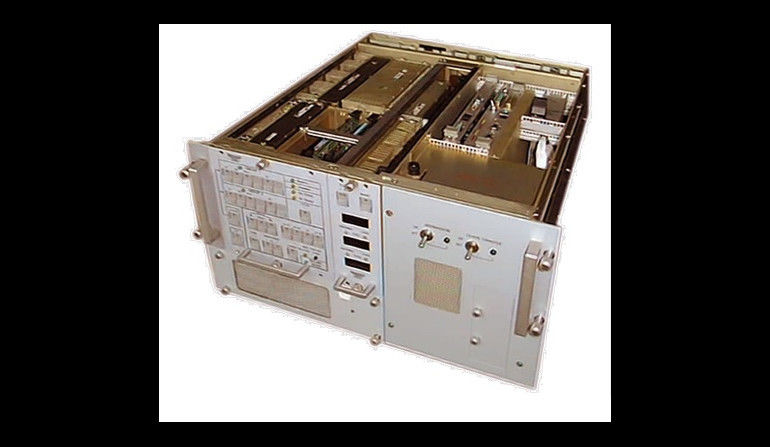
Thus, the IFF system makes it possible to determine whether the given object is “friend” or “foe”. Lack of a relevant response does not allow the operator to fire at will, since some situations may emerge in which friendly platforms do not send a response to the sent request, e.g. in cases when the transponder is off, due to the mission profile, or for the reason of erroneous operation. In the light of the factors listed above, in order to determine that the identified object is a “foe”, it is required to complete the whole identification process which also makes use of additional sources, such as flight plans, SIGINT, visual recognition, communication suites, etc.
The IFF systems, starting from the moment of their introduction during the WW2, have been undergoing a systematic modernization process. The upgrades stepped outside the scope of replacement of the electronics, as safety and reliability constituted the main concerns. This is the reason for which the interrogation and reply signals are being encrypted, which is to make it impossible for the enemy to pretend to be the “friend”. Within that domain, as a result of a process similar to a race between the lock designers and burglars, new upgrades are being constantly implemented which, on the other hand, forces the user to periodically modernize or replace the elements of the utilized IFF suites.
Depending on the interrogation and reply signal encryption methods and strengths, ten modes of operation can be distinguished. The modes are designated as follows: in case of the military modes the designation takes on a form of an Arabic numeral – from 1 to 5; in case of the civil modes, they are designated by letters of alphabet – A, B, C, D and S. Modes from 1 to 4 are utilized solely by the military, modes 4 and 5 are encrypted. Modes 3 and A (often referred to as 3/A) and C and S, are used both by the military, as well as by the civil ATC service, for the purpose of maintaining the airspace safety, with a reference to the airspace in which both civil, as well as military aircraft are operated, in line with the ICAO norms. Polish Armed Forces utilize, currently, 1, 2, 3/A, 4, C and S modes.
Depending on the modes that are utilized, the IFF system is being assigned to a proper standard, referred to with the name “Mark” and Roman numerals. Polish Army uses the IFF Mark XIII system (mode 4 acts as the basic combat mode), however this solution is planned to be soon replaced by the IFF Mark XIIA system (mode 5 is the basic combat mode here).
IFF Mark XII System in Poland – Success for the Polish Army and Industry
IFF Mark XII system has entered operational use in the Polish Army thanks to the implementation of the significant “Supraśl” programme, during the 1990s, with significant involvement seen on the part of the Polish industry. At the moment, considering that the Polish Army is trying to introduce the IFF Mark XIIA system into its inventory, the Polish industry shall also contribute to that process, in the light of the historical developments above.
One should consider the fact that implementation of the IFF Mark XII system was a task which was much more complicated, in comparison with the IFF Mark XIIA suite now. Back in the 1990s the procedure was started virtually from scratch. Not only was Poland forced to initiate manufacturing processes related to the systems that had never been manufactured within its territory before, but also new procedures and standards had also to be implemented in the Army. Moreover, more than 20 years ago, the Polish Army was using equipment which was much more varied, especially in the radar and communications branch, as compared to the present status. No access to the NATO documentation was granted, while the process of making the relevant changes was limited by the timeline constraints of that process.
Thee Polish Army, in collaboration with the industry, had to:
-
Replace the equipment (interrogating and replying devices, antenna arrays, wiring of the infrastructure, connectors, software);
-
Integrate the systems with the infrastructure (ground based radars, aircraft avionics, vessel hardware, command and control systems and databases);
-
Carry out the qualification tests concerning the new IFF devices, on every type of military equipment;
-
Carry out relevant training for the users, in line with the programme and instructions defined, and on the basis of a training infrastructure created from a scratch.
Analyses that had preceded the replacement procedure exhibited the fact that in case of the Polish Army, due to the differences between the individual versions of the equipment used, no plug and play solutions were available. Moreover, it was said that integration cost may constitute a major portion of the programme-related expenditure. Procurement of a ready-made system would entail the project stage, which would have to be carried out for the purpose of tailoring the system to be used with the specific equipment anyway. Thus the programme had to be carried out rapidly and in a manner which would be completely independent. Success was, besides financing, also conditioned by acquisition of proper knowledge and human resources.
Thus, the Ministry of Defence, taking a decision to replace the post-soviet system with a NATO counterpart within the “Supraśl” programme (concept works and the process in which tactical and technical requirements and assumptions were defined lasted only one year, from mid-1990 to 1991), also decided to utilize own radar industry and own R&D potential. Centrum Naukowo Produkcyjne Elektroniki Profesjonalnej RADWAR S.A. based in Warsaw (nowadays known as the PIT-RADWAR S.A company, being a part of the Polish Armaments Group) was tasked with acting as the primary contractor within that procedure.
Introduction of the IFF Mark XII System in Poland “by the Book”
During the first year, i.e. back in 1991, CNPEP RADWAR S.A. carried out an analysis of trends and directions of development for the IFF systems in the NATO member states, assuming that IFF Mark XII system operating with modes 1, 2, 3/A, 4 and C would be required – which was the latest variant at the time. Moreover, an assumption was made, that in order to meet the deadline imposed by the Polish Ministry of Defence, it would be required to collaborate with an experienced foreign partner. This was result of the fact that developing the core blocks of the system – interrogators and transponders – would prolong the implementation of the works.

However, a specific procedure was adopted, as the following assumptions were made:
-
Domestic industry was to be involved in the undertaking to a maximum possible extent;
-
Typical elements that were closely related to standardization of the IFF Mark XII system, i.e. the transponder and the interrogator, were to be manufactured on the basis of a license acquired from a foreign partner, manufacturer of track-proven equipment;
-
Any integration works, design works and implementation works, were to be performed independently;
-
The existing infrastructure of the hardware contained within the older system was to be utilized to the maximum possible extent;
- Transitional period issues were to be resolved through proper management.
This method of proceeding within the programme, proposed by the CNPEP RADWAR S.A. company, was accepted by the Polish Ministry’s of Defence Council dealing with Research and Technical issues and it was ultimately started to be implemented beginning from mid-1992. In the meantime, in the period between 1991 and 1993, several offers of the leading global companies were also being considered. As a result of the process above, a licensing contract was signed with the French Thomson CSF-CNI company, concerning the manufacturing process of the following IFF Mark XII hardware, at the CNPEP RADWAR S.A. facility:
- Long range interrogator package (SA10M2 interrogator + G3DE3 decoder + SR19 and SR20 operator panels);
- Medium range interrogator package (SB16E3 interrogator);
- Onboard interrogators (SB14E/A);
- SC10D2 transponders.
Stages of Implementation of the IFF Mark XII System in the Polish Army
Due to the time constraints, “Supraśl” programme was being pursued in stages, with certain priorities defined. “Air Traffic Safety” was considered to be the most important, hence long range interrogators for the ground-based airspace monitoring radars were introduced first, along with transponders for the aircraft.
At the second stage, IFF devices were supplied to the land forces and the Navy, especially for the following systems:
-
Missile systems;
-
Short range radars;
-
Submarines and surface combatants;
-
Visual Observation and Communication Outposts (POWTiŁ) of the Polish Navy, utilizing the Nur-23 airspace and maritime radars and SRN 7453 maritime radars.
At the third stage, command and control systems were taken into account, also within the scope of transmission of digital data pertaining to the identified object and remote control at vast distances. The last stage concerned the integration of the onboard interrogators (aviation ones) on the MiG-29 aircraft utilizing the Russian radars. Thanks to the above steps, a fluid transformation of the IFF system indeed took place, with the new solution being compliant with the NATO standards.

Each system setup and implementation of such system were preceded with relevant R&D programme, and 40 such programmes were executed. Within the framework of the “Supraśl” initiative, the following systems were developed, implemented and tested, among other solutions:
-
16 types of systems in case of fixed-wing aircraft and helicopters;
-
10 types of radar-borne systems;
-
3 basic naval solutions, including systems for submarines and surface combatants, equipped with radar-based fire control systems for the artillery and missiles.
Finalization of the research and development works was, in any case, tantamount with starting series production and equipping all (or most) of the platforms of the given type or variant with relevant IFF system hardware elements.
This was possible, due to the fact that original integration documentation was created, referring to the installation methods concerning the installation of interrogators and transponders on a variety of platforms. At the same time, the Army has gained access to a number of accessories and complementary solutions for the IFF system designed in Poland, such as antennas (15 types, for interrogators and replying components), rotary connectors, mechanical and electric interfaces.
Moreover, using the licensed transponder as a starting point, nine variants of the IFF system for aviation applications, of varied field of use, were developed and the relevant manufacturing process was started. The whole programme ended up in development of around 300 different transponders, installed, among other platforms, on:
-
Aircraft: Su-22M4, Su-22UM3K, MiG-29, MiG-29UB, Ts-11 Iskra, MiG-21UM, MiG-21Bis. M-28 Bryza 1R, M-28 TD and An-28;
-
Helicopters: Mi-24W, Mi-24D, W-3W, W-3RM, W-3T, Mi-8, Mi-14PS, Mi-14PŁ and Mi-17;
-
submarines and surface combatants (Project 1241, 206FM, 207, 570/I, 863 ships, ORP „Kaszub”, ORP „Kontradmirał X. Czernicki”, ORP „Bałtyk” and ORP „Wodnik”).
More than 120 different interrogator set-ups were implemented, on:
- radars: N31, N31M, N11, N12, N21, N22, N23 an SRN7453 (last two belonging to the POWTiŁ component of the Navy);
- SAM systems: OSA, KUB, NEWA;
- Ship-borne observation and fire control radars: MR123 and HARPUN (Project 1241 missile vessels) and MR302 (ORP „Kaszub” corvette).

Within the framework of the “Supraśl” programme, the following tasks were additionally completed:
-
Interrogators were installed onboard the MiG-29 jets;
-
Training database was created for the users;
-
Information about identification was generated and transferred to the ASOCs.
A particular challenge was also seen in automating the identification system and coupling the Polish military radars, including the IFF interrogators, with the ASOC system. The above problem required a number of studies concerning the modern digital technology to be conducted, with the use of signalling processors. Moreover, the technique for extracting the secondary radar data was required to be designed (UZS-01 extractor).
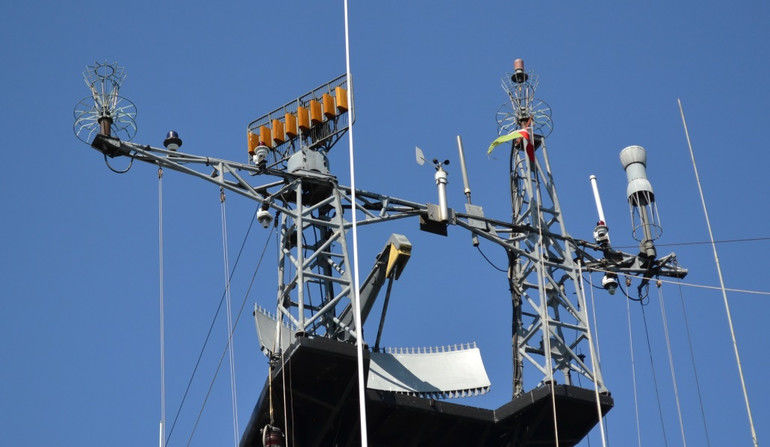
“Supraśl” Programme Benefits
The decision taken by the Polish Ministry of Defence to replace the IFF system before Poland joined NATO, on the basis of the work carried out by the CNPEP RADWAR S.A. company was certainly without a precedence. However, the adopted philosophy turned out to be accurate, as it made it possible to rapidly equip the Polish Armed Forces with the new systemic hardware, compliant with the NATO requirements.
What is more, it facilitated the steps taken later. Thanks to acquisition of relevant technologies and know-how, it was possible to develop the following components further down the road:
-
IKZ-02 short range interrogator of original design (developed within the framework of the NALEPIAN project, co-financed by the State Committee for Scientific Research of the Ministry of Higher Education and Science, and implemented in collaboration with the Polish Navy);
-
ISZ-01 medium range interrogator of original design, replacing the licensed SB16E3 device (development financed by CNPEP RADWAR S.A.);
-
RLG005 Extractor embedded within the SA10M2 interrogator (in this way, SA10M2E interrogator was developed);
-
Mode 4 encryption systems: KIN-2 and KTR-4, based on the Mode 4 chipsets provided by the Polish Ministry of Defence, along with a distribution system for the Mode 4 keys;
-
Several types of antenna arrays for the radars, within which the interrogators are embedded, including a system for the M-28 Bryza Bis aircraft onboard radar.
Establishing a logistic support chain system for the IFF devices was another important element of the “Supraśl” programme. Its added value is appreciated by the soldiers themselves, who, on a daily basis, utilize the support provided by the CNPEP RADWAR S.A. experts, also in atypical situations. This was the case in the Navy, when the Oliver Hazard Perry class frigates, provided by the United States, were to be tailored to be operated with the IFF system in the Polish Armed Forces, utilizing the Polish supply chain. RADWAR experts’ assistance and domestically designed devices made it possible to solve most of the problems related to the new vessels of the Polish Navy.

Future Task – Implementation of the IFF Mark XIIA System (Kwisa and Kwisa-2 Initiatives)
Transitioning from Mark XII to Mark XIIA system is mainly related to implementation of mode 5, within which modern digital encoding and encryption methods are applied, with a reference to the transmitted signals. According to the experts, the fifth iteration of the system is resistant to spoofing, and offers numerous technical and operational advantages to the user.
Implementation of mode 5 shall be planned with fact borne in mind, that this process is not started from scratch. Moreover, PIT-RADWAR company still exists (as a fused company, formed out of the PIT [Industrial Telecommunications Institute] and CNEP RADWAR S.A. entities) which is capable of dealing with the aforesaid task successfully.
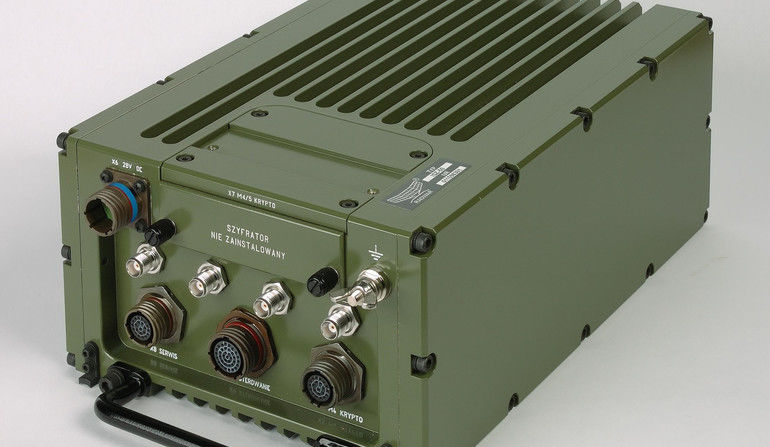
The company is, at the moment, working on the development projects related to KWISA and KWISA-2 systems, ordered by the Armament Inspectorate of the Polish Ministry of Defence. KWISA project is related to development of the medium and long range interrogators (ISZ-50 and IDZ-50 respectively), operating within the IFF Mark XIIA system, and destined to operate in conjunction with medium and long range radars respectively.
Within the framework of the said projects, prototypes of the IFF Mark XIIA interrogators, ISZ-50 and IDZ-50, have already been designed. Then these devices were installed in the Polish military radars, for testing purposes. In January 2015, following the initial tests, the company submitted the new interrogators for the qualification test programme. The Polish Army has already made use of the above effort, since SOŁA radars delivered by the PIT-RADWAR company have been fitted with the ISZ-50 interrogators, and completed the required defence and security mode II test programme.
However, it should also be noted that besides the aforesaid IDZ-50 and ISZ-50 interrogators, short range interrogators for the IFF Mark XIIA system are also expected to be developed (with mode 5). PIT-RADWAR company is ready to develop such devices, known under the working name of IKZ-50, and the entity is awaiting to receive an order to carry out such work. Developing and creating a short range interrogator would constitute a natural extension of the KWISA programme, and knowledge gathered during such work would guarantee flawless implementation of the said undertaking.
KWISA-2 project is related to development of prototypes of a TRL-50 IFF Mark XIIA transponder, and RIFF system TRN-50 transponder. TRL-50 transponder would be utilized on air and naval platforms. Apart from its basic role - receiving and sending the IFF signals and reports, the device also acts as the Reverse IFF interrogator.
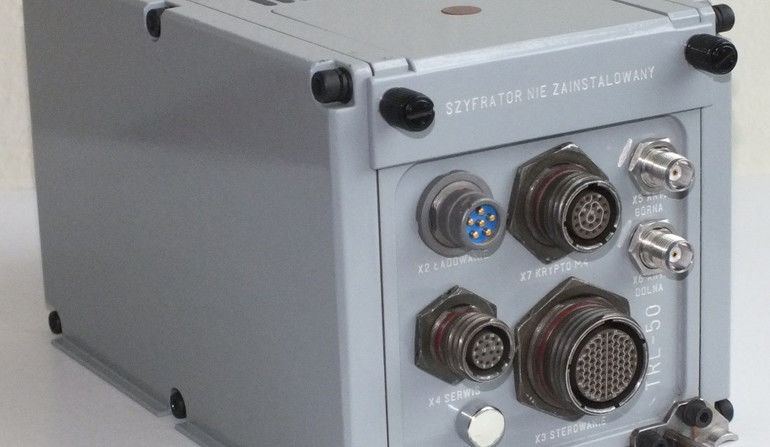
RIFF system makes it possible to identify land-based objects from the air, which radically diminishes the risk of friendly fire. Thanks to the aforesaid solution, the air platforms obtain an identification ability in the air-to-surface setting, without any need of using specially designed systems, the development and installation of which on the air platforms is very expensive. TRN-50 transponder is a replying device of the RIFF system, and it is destined to be used on land and naval platforms.
It is Worth to Make Investment in the Polish Radar System
Development and manufacturing of the aforesaid systems is embedded within a long term programme of implementation of the IFF Mark XIIA system in the allied forces of NATO. For the reasons stemming from the vast work area and the degree of complication of the programme, only a few entities in Europe remain in possession of proper knowledge required for implementation of such initiative. However, it shall be stressed that the RIFF system is currently being developed by three European states, including Poland, on the basis of a relevant tripartite agreement signed by the Ministries of Defence.

As it was confirmed by the implementation of the “Supraśl” programme, the experience gathered within the process of introducing the IFF system into operation forms a solid foundation for further, original developments, enabling the company to meet the requirements defined by the Polish MoD and other potential customers. Thanks to the above, the Polish solutions are also being purchased abroad (IFF antennas). Moreover, the array of those solutions also provides us with virtually full autonomy, in a field which is so important.
The Article made use of materials provided by the PIT-RADWAR company.


